The Kleros Badge & Token Bounty - An Explainer
Our token curated registry is growing nicely. To incentivize even more submissions, we're offering 2 Million PNK to successful token submitters. Read on to find out how you can submit and acquire your PNK!

Our token curated registry is growing nicely. To incentivize even more submissions, we're offering 2 Million PNK to successful token submitters. Read on to find out how you can submit and acquire your PNK!
What is a Token Curated Registry?
Also known as a TCR, a token curated registry is an incentivized voting mechanism that allows for the creation of trusted lists maintained by the users.
In traditional curated lists, a company representative or team is responsible for curating content. The categories of online retailers like Amazon or AliExpress give a more traditional idea of a list curated by a centralized actor to keep items in the right places.
Kleros uses game theoretical incentives to create a decentralised list of tokens collectively voted on by users who decide which submissions are valid or rejected.
In theory, a TCR will be held to higher standards than a traditional list or registry because it's maintained by a group of people willing to stake economic value for entries they strongly believe belong on the list.
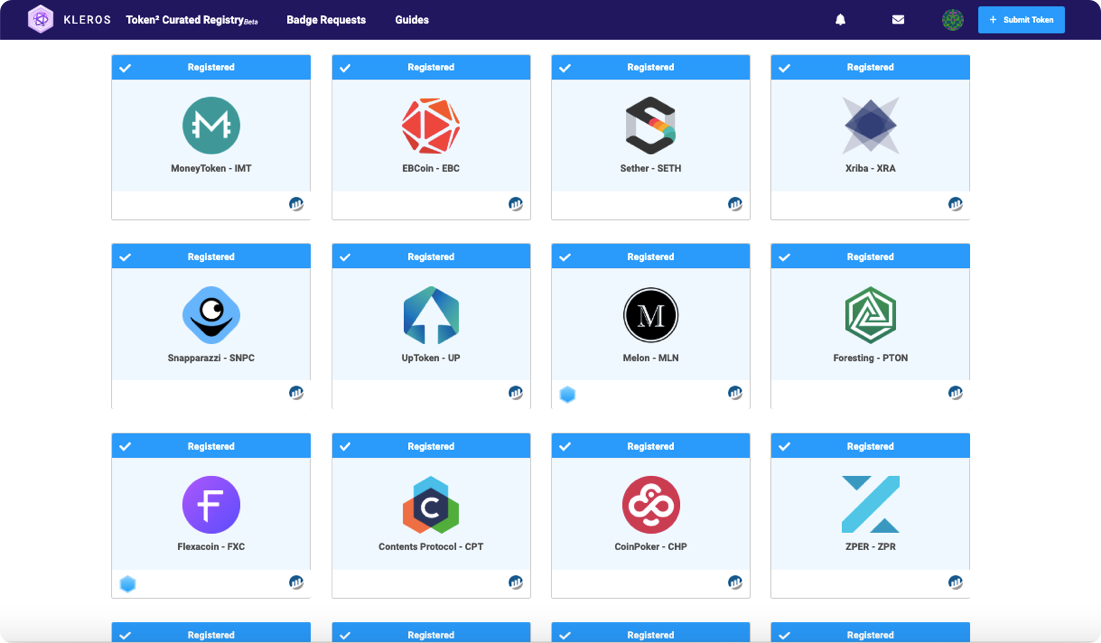
Each submission has to fit to some predefined criterion. For example, in the non-blockchain world, you could attempt to list your MacbookPro on eBay (which is an example of a curated list btw) in the 1950s Bugatti gearbox parts category. You would probably find after a short amount of time the listing is deleted and / or moved by an eBay representative to the relevant category Computers>Laptops> Apple>Macbook section).
Here, a human (or in this day and age, AI system) picked up on the wrongly categorized submission and acted accordingly in deleting or moving that listing.
In a decentralized token curated list like Kleros', there is no 'company employee or AI actor' with this responsibility. Rather, the aforementioned financial incentives are used to curate the items on the list.
So, How Can I Make Money With This?
That's right! However, it's not money for nothing as you're contributing to the health and meticulous precision of the list. More importantly, we're looking to expand and build the quality of the Ethereum ecosystem by creating transparent curated lists of only the most legitimate projects in the eyes of the community.
The economics behind a decentralized application (in this case our token curated list) lie firmly in the financial incentives field. Each user in this permissionless world is free to act as they like however, acting maliciously will cost that user money whereas, acting honestly (we like to say 'coherently) will result in a financial gain.
#DeFi is fun but as a @Kleros_io juror, I have worked on 29 cases and made 1660$ of ETH and 1310$ of PNK while y'all stacked cents of $DAI on @compoundfinance
— Marc Zeller⚡🔥 (@barbuetmechant) September 13, 2019
Just Use Kleros.#Ethereum pic.twitter.com/YudPkzmXu7
Submit and Claim Your Share of The PNK
The token curated registry requires tokens, that's a given. So far, we've seen a healthy amount of submissions from the community and various projects. Now, we're offering an incentive for further submissions from the community. You will receive PNK in accordance with the amount of valid tokens submitted to the list until the 25th of December at 23:59 UTC.
For example, if you make 10 valid submissions from a total of 100 valid submissions, you would receive 100k PNK (around $660 at current prices).
Reminder: 1 Mil PNK Reward For Successful Token Submissions
How Do I Submit a Token?
First you want to head over to tokens.kleros.io
First click on the 'Submit Token' button in the top right hand corner to be greeted with a pop up window as shown below.

Upon submission, your listing should look something like the token below.
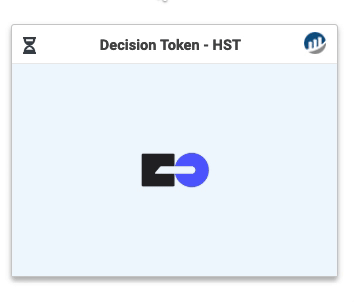
Upon clicking on your submission you will see the info displayed below including the challenge period. This is the time allotted for other users to challenge the listing in the case of incorrect data or logo format.

Once this challenge deadline has passed, the token status will change to 'Registered' as shown below. Remember, users can also challenge the submission, which will then send it to trial to be arbitrated on by Kleros jurors.
They will make the final decision based on any evidence given if the token should be listed or not.
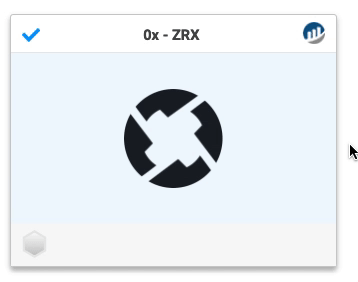
Once a token is successfully listed, the status will change to 'Registered' as seen above. These tokens may still be challenged and sent to trial, but assuming the status is 'Registered' at the end of the incentive period (25th December at 23:59 UTC), the token will be eligible for the PNK payout.
What Constitutes a Valid Submission?
A token must be accepted to the list (pending challenges and juror decision if necessary).

Once a token has been successfully registered on the list, it will look much like the one above. Only tokens which are in this state at the end of the three month period will be eligible for the PNK payout.
Reminder: 1 Mil PNK Reward For Successful Badge Submissions
How Do I Add a Badge?
Much like the token submission process, adding a badge follows much the same theory with a slightly different layout and ETH deposit fee. The higher fee relates to the benefits given by attaining any one of the badges on offer.
Select the already registered token you want to add the badge to. For the purpose of this tutorial we have selected Gnosis. Interestingly, Gnosis already has a couple of badge, the Ethfinex Listing badge and the ERC20 compliant badge. Both these badges come with their own specific criterion and benefits.
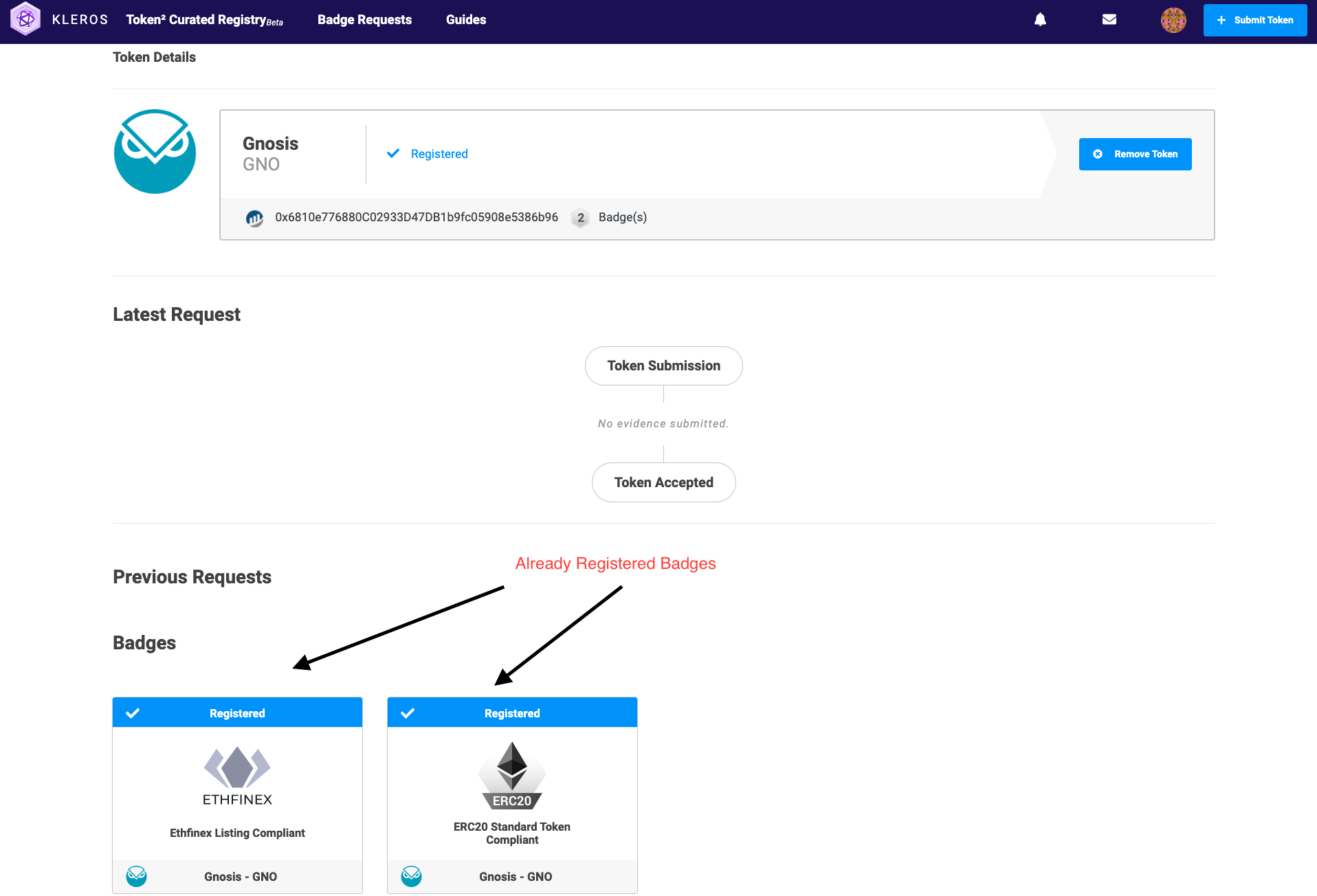
We're going to add a new badge to the Gnosis project by clicking the 'Add Badge' button as shown below. You'll be greeted with the screen illustrated.
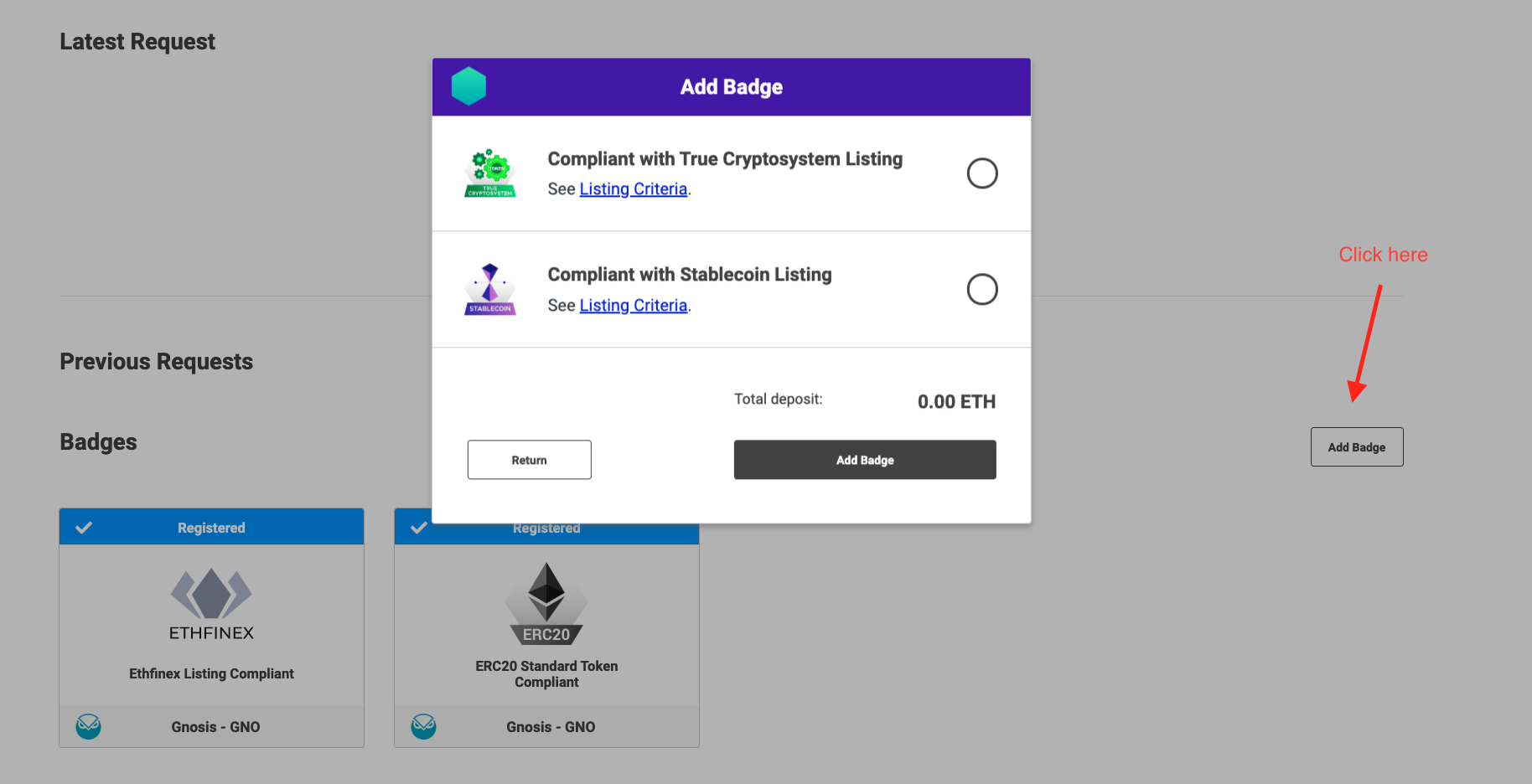
Let's select the True Cryptosystem badge which in turn notifies the user of the deposit fee needed to add the badge.
Clicking on the 'Listing Criteria' link directs you to PDF with full listing requirements. Below, we can see the requirements for the True Cryptosystem listing requirements.

Remember: The deposit fee is refundable. Assuming the project you've selected conforms to the listing criteria of the badge and you win any potential challenges, your deposit will be returned.

Once you click 'Add Badge', a corresponding Metamask popup for your transaction will popup. Once the TX is confirmed your badge addition will appear in the 'Badge Requests' page.

Every new badge addition is open to challengers at this point. This means that any user willing to stake their own ETH deposit on the validity of the submission is welcome to do so.
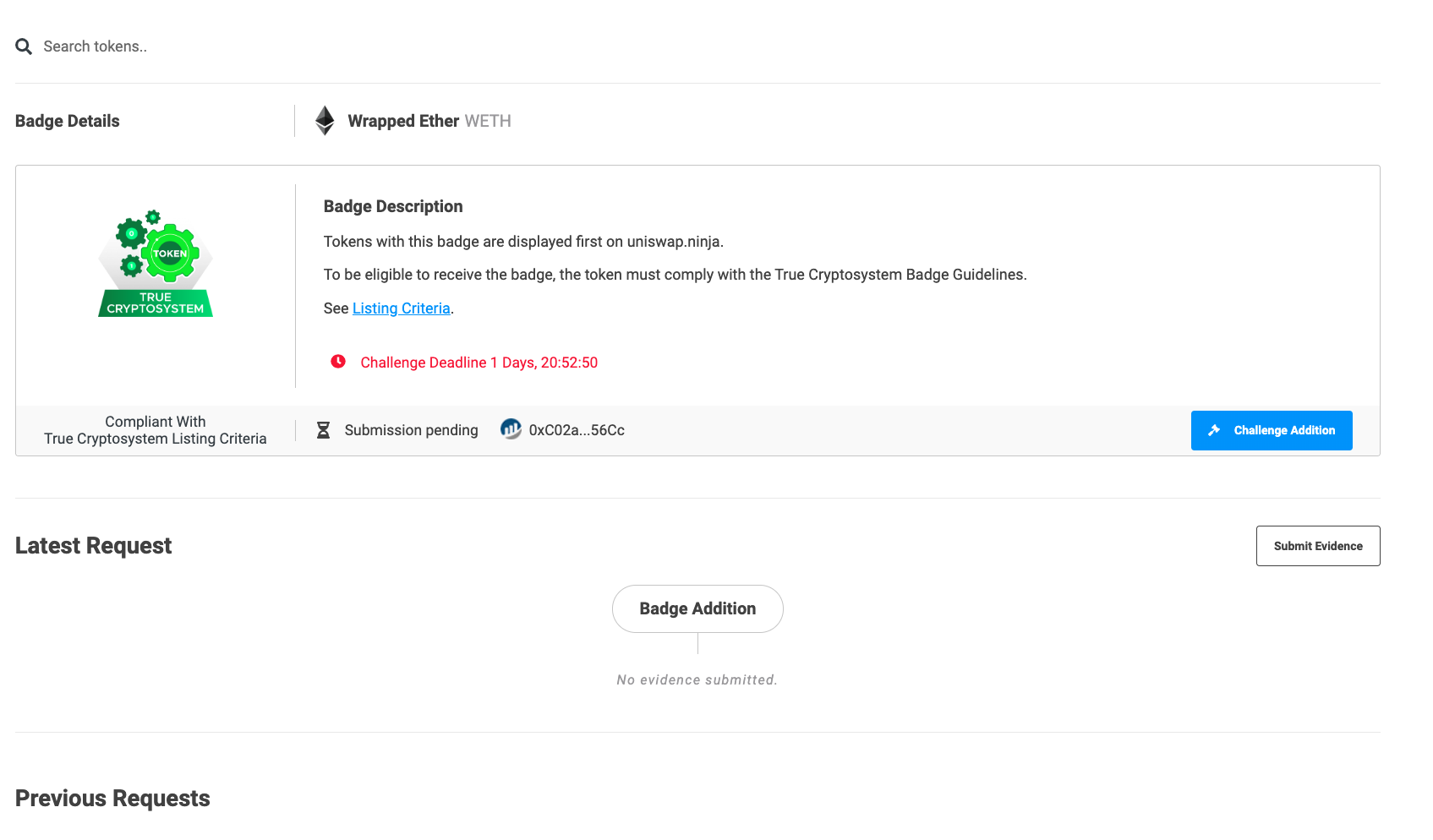
Challenging a submission is much like the submission process. Upon challenging, you will be asked to make an ETH deposit as your 'skin in the game' backing the challenge of the submission. This deposit fee makes malicious challenges far less likely due to the economic loss involved. If your challenge is baseless, you're highly likely to lose your deposit and incur an unnecessary financial loss.
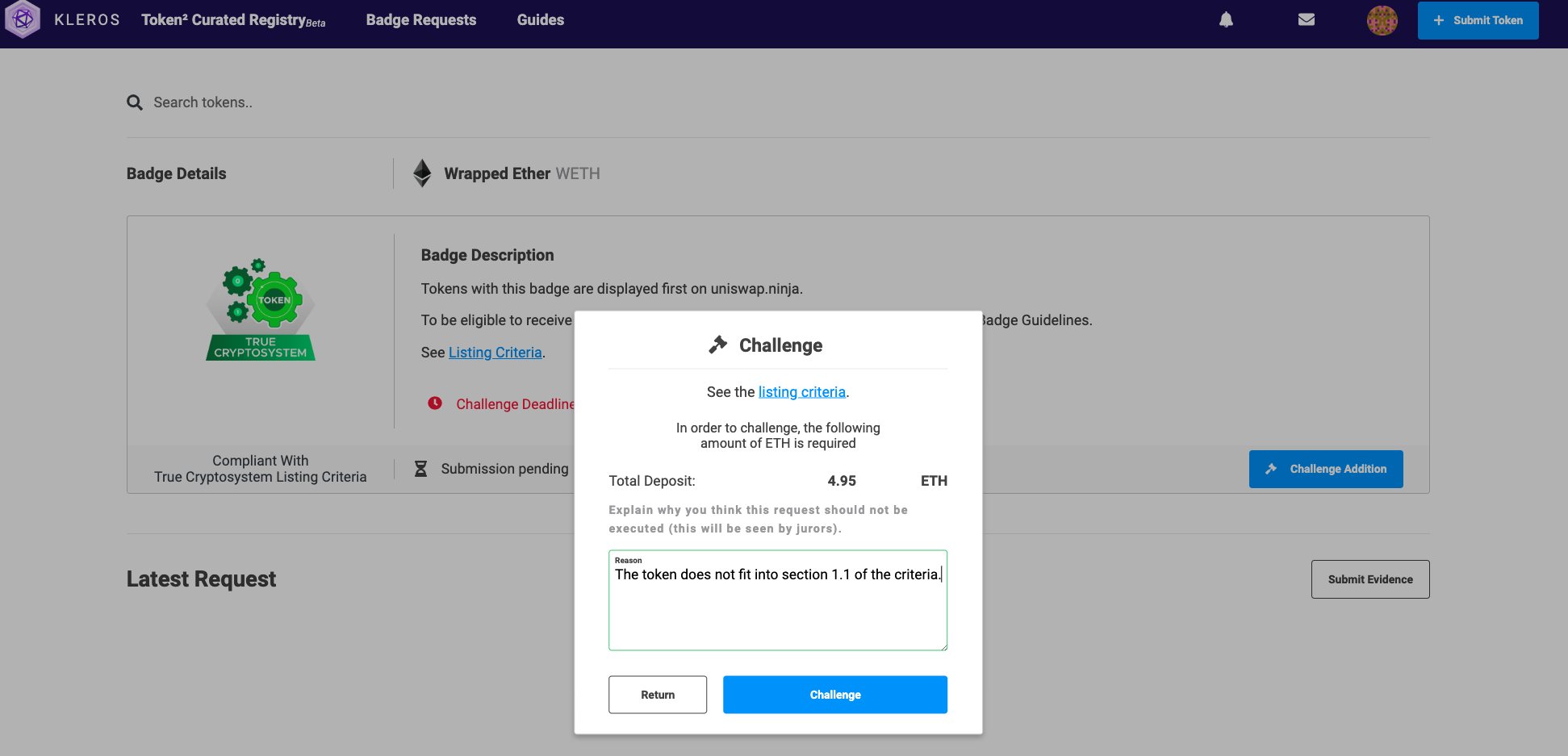
That's It!
Head over to our TCR and start listing badges or tokens now. If you want to read deeper into the workings of the list click here.


Where Can I Find Out More?
Join the community chat on Telegram.
Visit our website.
Follow us on Twitter.
Join our Slack for developer conversations.
Contribute on Github.
Download our Book

